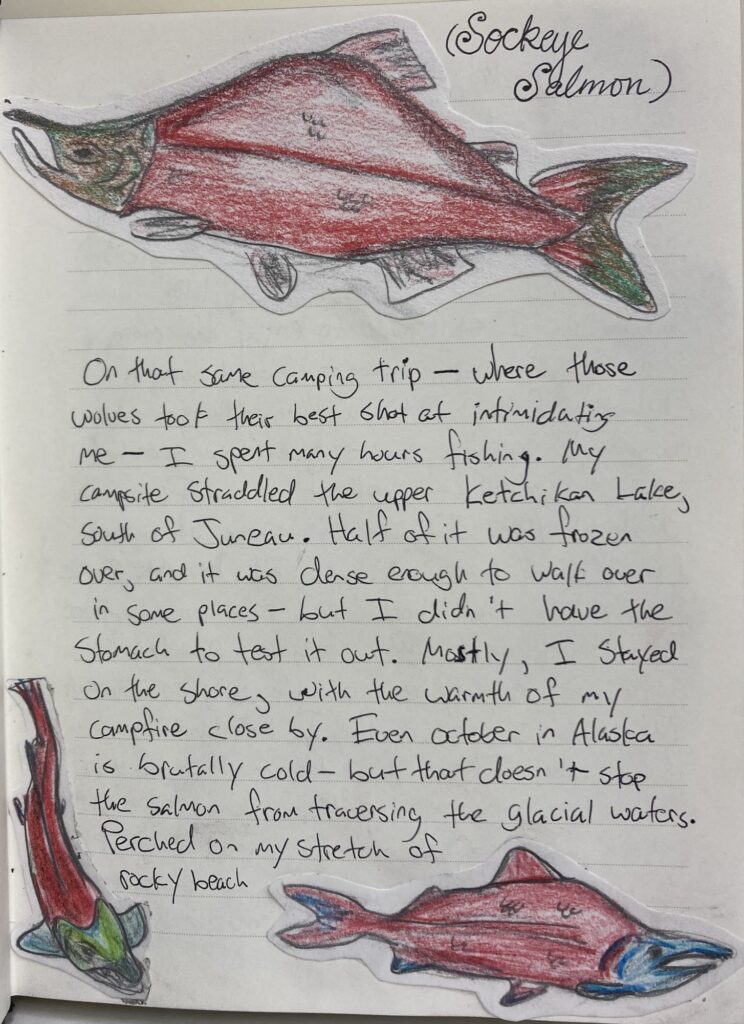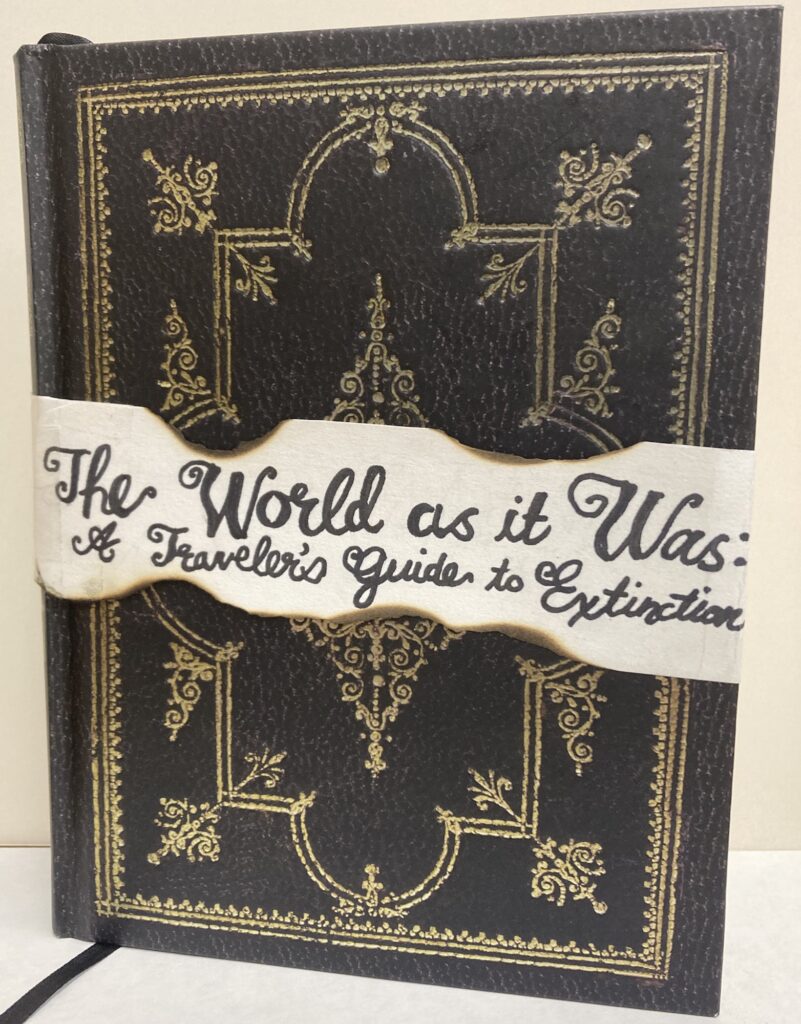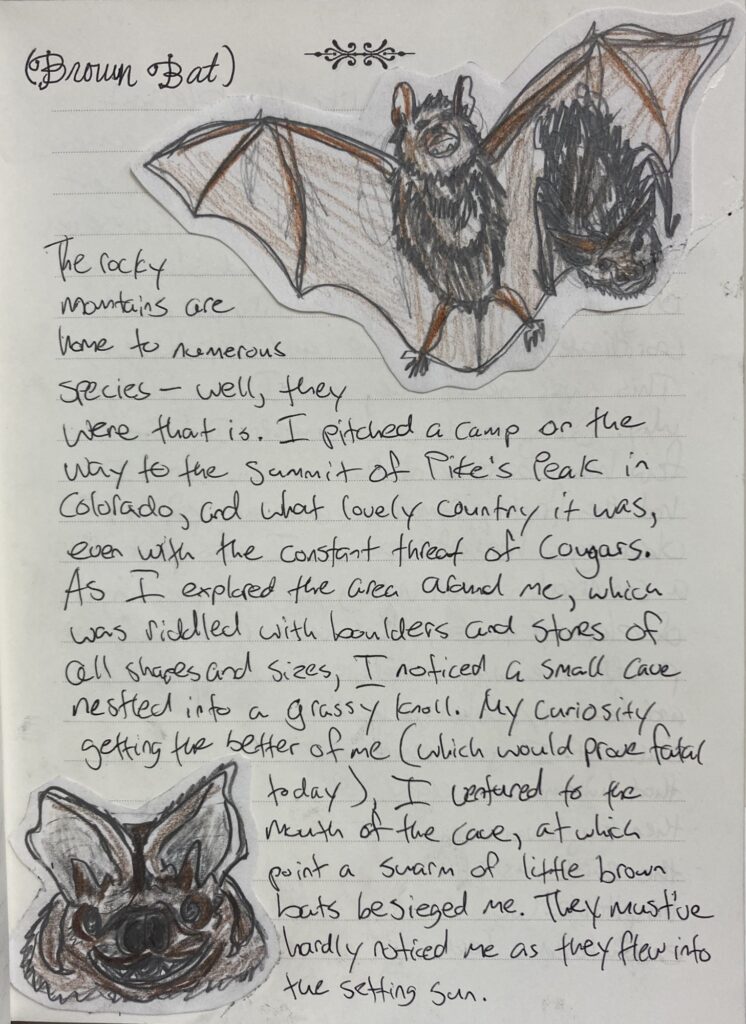Initially, I struggled to devise a topic for my artist’s book, but upon reflecting on my experience in a course on environmental justice, I decided I wanted to center my project on the encroaching reality of mass extinction. Climate change threatens to displace and eliminate not only already endangered species, but species boasting healthy populations and human beings additionally. There is a very real possibility that some of the world’s most recognizable animals–such as the Asian Elephant and the Bengal Tiger–will become footnotes in the zoological history of this planet sooner rather than later. Moreover, it is not unreasonable to consider the sustainability of the human race in regard to climate change. The Earth issued a warning during the 1930’s in the United States that humans must monitor their ecological footprint, where over-farming in the Midwest resulted in years of arid, untenable soil, and devastating dust storms. Technological advancement has only augmented agricultural production–and therefore, fossil fuel emissions–which contribute significantly to climate change. Thus, the goal of my artist’s book was to envision a world without some of the planet’s most easily distinguishable animals, all of which happen to be endangered or critically endangered.
I wanted to adopt a dystopian perspective for this project; wherein, an unnamed narrator writes a journal to reflect on his life prior to a mass-extinction event spurred by climate change and the copious consumption of resources. In this journal, the narrator details some of the places he traveled–such as Alaska and India–and the animals he observed while in these locations. Each entry involves a different animal–with each one being sketched to provide a visual to future, surviving generations. In order to keep audiences engaged, each animal will have a different fictional story attached to it, and no story is over two pages long. I feel that the anthology format of the journal, in addition to keeping the length of each story short, is an effective method to maintaining audiences’ attention, as each story is self-contained and reads relatively quickly (depending on how easily my handwriting is comprehended). Additionally, there is both an introduction and a conclusion to the journal to provide marginal exposition as to the physical state of both the world and the narrator. Overall, “The World as it Was” is designed to emphasize the intensifying threat of human and animal extinction due to climate change–and to provide a glimpse into a potential future where the world as we know it ceases to exist.



To view the digital content of “The World as it Was,” click on this hyperlink.
